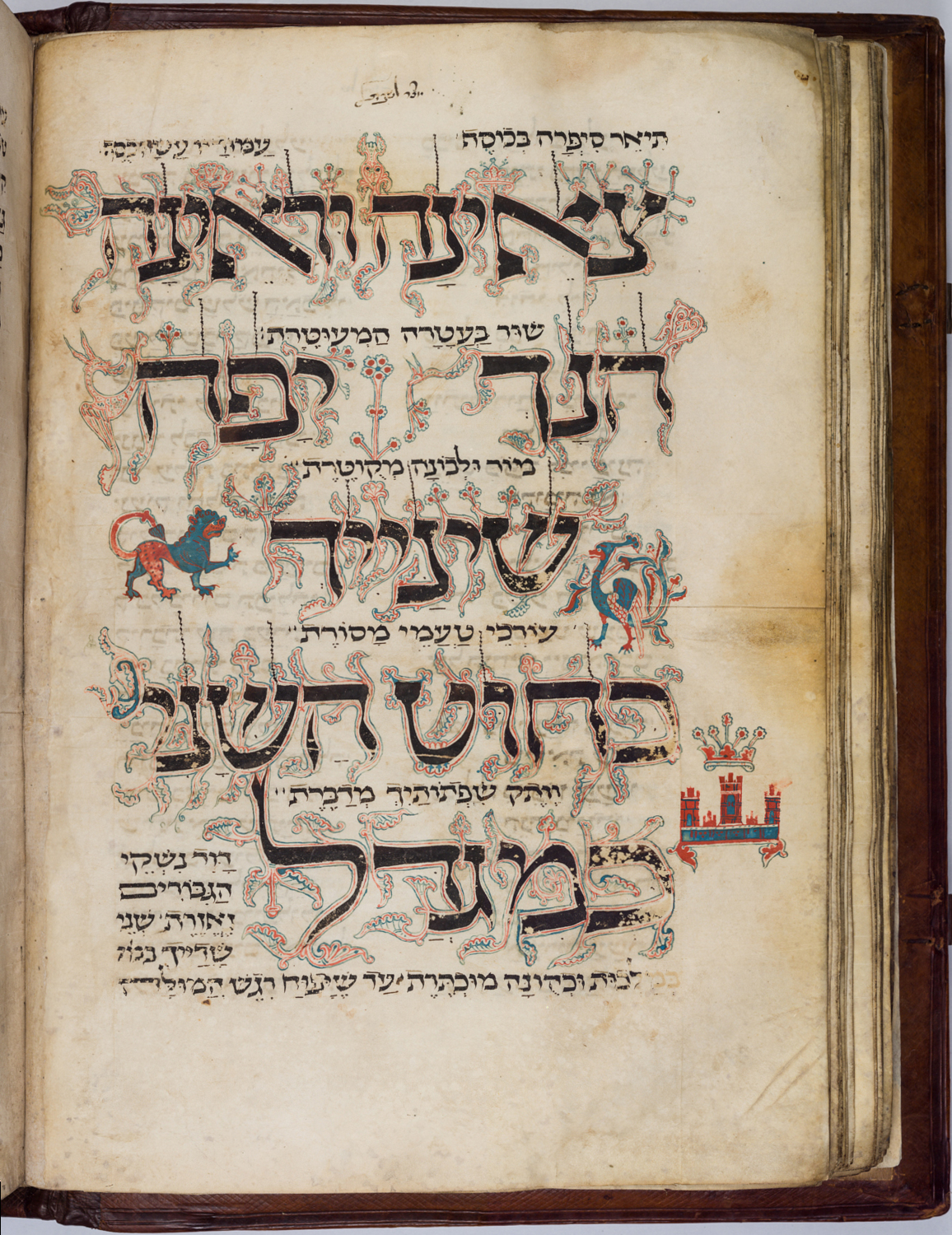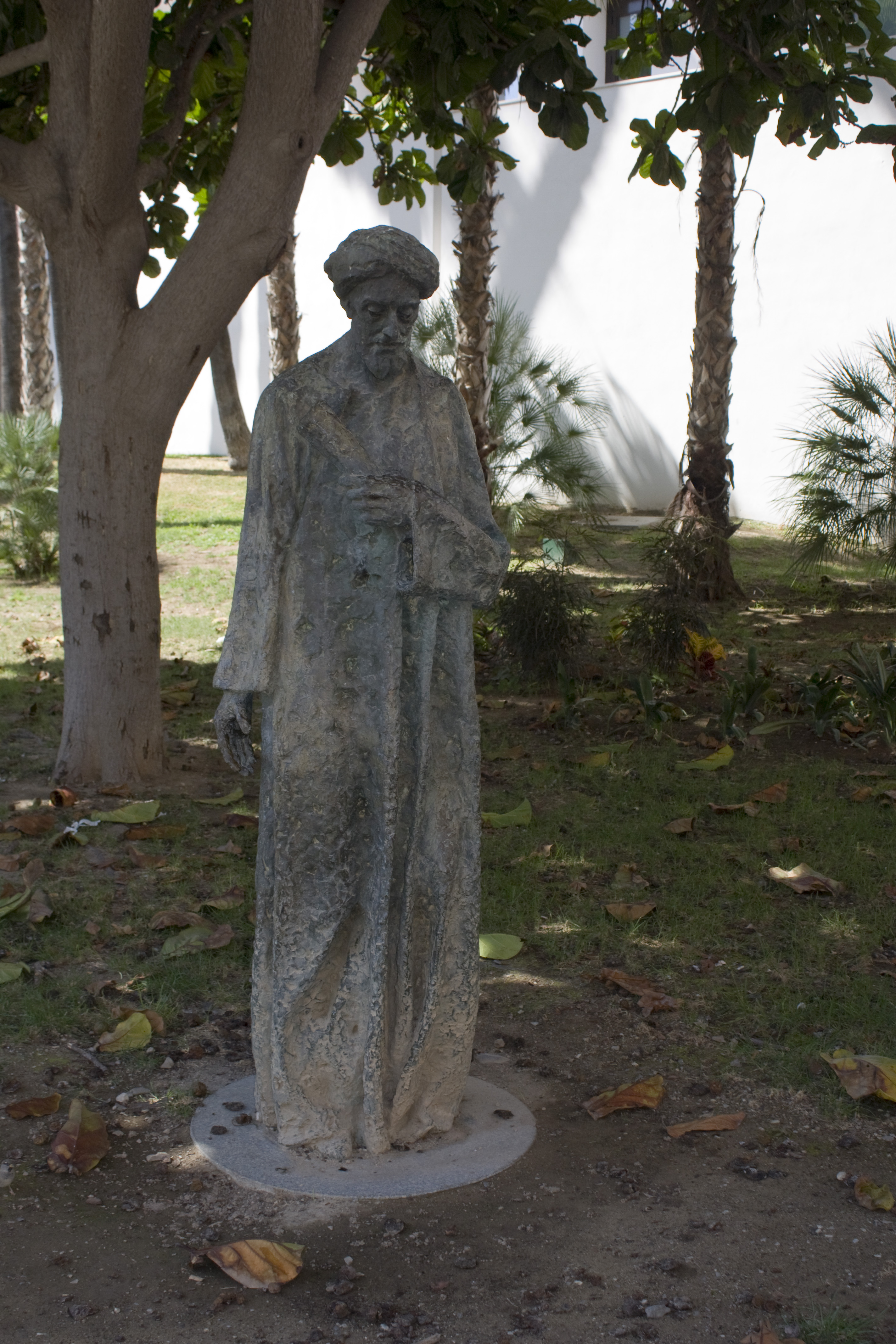|
Isaac Ben Todros
Isaac ben Todros was a Spanish rabbi and Talmudist who lived toward the end of the thirteenth century. He was the teacher of Shem Tov ibn Gaon and Nathan b. Judah, and the friend of Bahya ben Asher, who mentions him in his Pentateuch commentary. He is also mentioned by Mordechai ben Hillel (d. 1310); and was still living in 1305; as on July 26, 1305 he subscribed to Solomon ben Adret's excommunication against the study of metaphysics by anyone under the age of thirty. He was probably one of the rabbis of Barcelona. He wrote a commentary on the Machzor, and a halakhic commentary to the "Azharot" of Solomon ibn Gabirol. He is probably not to be identified with the Todros ben Isaac of Gerona (Brüll) who is praised by Kalonymus ben Kalonymus (1323) at the end of his "Even Bohan," and who wrote novellae In Roman law, a novel ( la, novella constitutio, "new decree"; gr, νεαρά, neara) is a new decree or edict, in other words a new law. The term was used from the fourth century AD o ... [...More Info...] [...Related Items...] OR: [Wikipedia] [Google] [Baidu] |
Rabbi
A rabbi () is a spiritual leader or religious teacher in Judaism. One becomes a rabbi by being ordained by another rabbi – known as ''semikha'' – following a course of study of Jewish history and texts such as the Talmud. The basic form of the rabbi developed in the Pharisees, Pharisaic (167 BCE–73 CE) and Talmudic (70–640 CE) eras, when learned teachers assembled to codify Judaism's written and oral laws. The title "rabbi" was first used in the first century CE. In more recent centuries, the duties of a rabbi became increasingly influenced by the duties of the Clergy, Protestant Christian minister, hence the title "pulpit rabbis", and in 19th-century Germany and the United States rabbinic activities including sermons, pastoral counseling, and representing the community to the outside, all increased in importance. Within the various Jewish denominations, there are different requirements for rabbinic ordination, and differences in opinion regarding who is recognized as ... [...More Info...] [...Related Items...] OR: [Wikipedia] [Google] [Baidu] |
Shem Tov Ben Abraham Ibn Gaon
Shem Tov ben Abraham ibn Gaon (1283 – c. 1330) (Hebrew: שם טוב בן אברהם אבן גאון) was a Spanish Talmudist and kabbalist. Biography Shem Tov was born at Soria, Spain. From his genealogy given in the preface to his ''Keter Shem Tov'', Azulai concluded that "Gaon" must have been the proper name of one of Shem Tov's ancestors. Zunz and Geiger however, suppose "Gaon" to be the Hebrew transliteration of " Jaén", indicating that Shem Tov's family originally came from that Spanish city.Jewish EncyclopediaShem-Tob ben Abraham ibn Gaon/ref> After he had studied Talmud under Solomon ben Adret and kabbalah under Isaac ben Todros (RIBaT, which is the abbreviation of "R. Joseph b. Tobiah" according to David Conforte), Shem Tov moved to the Land of Israel in the hope of finding in the Holy Land a more suitable place for kabbalistic meditation. He lived for some time in Jerusalem, and then settled at Safed.' Works At Safed Shem Tov wrote the following works, of which ... [...More Info...] [...Related Items...] OR: [Wikipedia] [Google] [Baidu] |
Bahya Ben Asher
Bahya ben Asher ibn Halawa (, 1255–1340) was a rabbi and scholar of Judaism, best known as a commentator on the Hebrew Bible. He is one of two scholars now referred to as Rabbeinu Behaye, the other being philosopher Bahya ibn Paquda. Biography ''Rabbeinu Behaye'' was a pupil of Rabbi Shlomo ibn Aderet (the ''Rashba''). Unlike the latter, Bahya did not publish a Talmud commentary; he is, however, considered by Jewish scholars to be one of the most distinguished of the biblical exegetes of Spain. He "discharged with zeal" the duties of a ''darshan'' (Hebrew for "expounder") in his native city of Zaragoza, sharing this position with several others. Works Bahya's principal work is his commentary on the Torah (the five books of Moses), but he is also known for others, especially ''Kad ha-Kemah''. Torah commentary The commentary on the Torah - "מדרש רבינו בחיי על התורה " - enjoyed much favor, as attested to by the numerous supercommentaries published on it ( ... [...More Info...] [...Related Items...] OR: [Wikipedia] [Google] [Baidu] |
Mordechai Ben Hillel
Mordechai ben Hillel HaKohen ( he, "המָּרְדֳּכַי" ,רבי מרדכי בן הלל הכהן; c. 1250–1298), also known as The Mordechai, was a 13th-century German rabbi and posek. His chief legal commentary on the Talmud, referred to as ''The Mordechai'', is one of the sources of the ''Shulchan Aruch''. He was killed in the Rintfleisch massacres in 1298. Biography Little is known of Mordechai's early life. He belonged to one of the most prominent families of scholars in Germany: his grandfather Hillel, on his mother's side, was a grandson of Eliezer ben Joel ha-Levi, who was in turn a grandson of Eliezer ben Nathan. Mordechai was also a relative of Rabbi Asher ben Jehiel. He was a son-in-law of R' Yechiel of Paris. He was married to Zelda, with whom he had five children. His principal teacher was Meir ben Baruch of Rothenburg; he was also taught by Perez ben Elijah of Corbeil, Ephraim ben Nathan, Abraham ben Baruch (Meir of Rothenburg's brother), and Dan Ashkenazi. In ... [...More Info...] [...Related Items...] OR: [Wikipedia] [Google] [Baidu] |
Solomon Ben Adret
Shlomo ben Avraham ibn Aderet ( he, שלמה בן אברהם אבן אדרת or Solomon son of Abraham son of Aderet) (1235 – 1310) was a medieval rabbi, halakhist, and Talmudist. He is widely known as the Rashba (Hebrew: ), the Hebrew acronym of his title and name: Rabbi Shlomo ben Avraham. The Rashba was born in Barcelona, Crown of Aragon, in 1235. He became a successful banker and leader of Spanish Jewry of his time. As a rabbinical authority his fame was such that he was designated as El Rab d'España ("The Rabbi of Spain"). He served as rabbi of the Main Synagogue of Barcelona for 50 years. He died in 1310. Biography His teachers were Nahmanides and Yonah Gerondi. He was a master in the study of the Talmud, and was not opposed to the Kabbala. Aderet was very active as a rabbi and as an author. Under his auspices and through his recommendation, part of the commentary on the Mishnah by Maimonides was translated from the Arabic into Hebrew. His Talmudic l ... [...More Info...] [...Related Items...] OR: [Wikipedia] [Google] [Baidu] |
Barcelona
Barcelona ( , , ) is a city on the coast of northeastern Spain. It is the capital and largest city of the autonomous community of Catalonia, as well as the second most populous municipality of Spain. With a population of 1.6 million within city limits,Barcelona: Población por municipios y sexo – Instituto Nacional de Estadística. (National Statistics Institute) its urban area extends to numerous neighbouring municipalities within the Province of Barcelona and is home to around 4.8 million people, making it the fifth most populou ... [...More Info...] [...Related Items...] OR: [Wikipedia] [Google] [Baidu] |
Machzor
The ''machzor'' ( he, מחזור, plural ''machzorim'', and , respectively) is the prayer book which is used by Jews on the High Holy Days of Rosh Hashanah and Yom Kippur. Many Jews also make use of specialized ''machzorim'' on the three pilgrimage festivals of Passover, Shavuot, and Sukkot. The ''machzor'' is a specialized form of the '' siddur'', which is generally intended for use in weekday and Shabbat services. The word ''machzor'' means "cycle"; the root ח־ז־ר means "to return". The term ''machzor'' originally referred to a book containing prayers for the entire year, including weekdays and Shabbat as well as holidays. Later (first in Ashkenazi communities) a distinction developed between the '' siddur'', which included weekday and Shabbat prayers, and the ''machzor'', which included festival prayers. Nevertheless, the original type of Machzor containing all of the prayers for the year continued to be used (even if less common) at least into the 20th century. ... [...More Info...] [...Related Items...] OR: [Wikipedia] [Google] [Baidu] |
Halakhic
''Halakha'' (; he, הֲלָכָה, ), also transliterated as ''halacha'', ''halakhah'', and ''halocho'' ( ), is the collective body of Jewish religious laws which is derived from the written and Oral Torah. Halakha is based on biblical commandments (''mitzvot''), subsequent Talmudic and rabbinic laws, and the customs and traditions which were compiled in the many books such as the ''Shulchan Aruch''. ''Halakha'' is often translated as "Jewish law", although a more literal translation of it might be "the way to behave" or "the way of walking". The word is derived from the root which means "to behave" (also "to go" or "to walk"). ''Halakha'' not only guides religious practices and beliefs, it also guides numerous aspects of day-to-day life. Historically, in the Jewish diaspora, ''halakha'' served many Jewish communities as an enforceable avenue of law – both civil and religious, since no differentiation of them exists in classical Judaism. Since the Jewish Enlightenment ('' ... [...More Info...] [...Related Items...] OR: [Wikipedia] [Google] [Baidu] |
Solomon Ibn Gabirol
Solomon ibn Gabirol or Solomon ben Judah ( he, ר׳ שְׁלֹמֹה בֶּן יְהוּדָה אִבְּן גָּבִּירוֹל, Shlomo Ben Yehuda ibn Gabirol, ; ar, أبو أيوب سليمان بن يحيى بن جبيرول, ’Abū ’Ayyūb Sulaymān bin Yaḥyá bin Jabīrūl, ) was an 11th-century Andalusian poet and Jewish philosopher in the Neo-Platonic tradition. He published over a hundred poems, as well as works of biblical exegesis, philosophy, ethics and satire. One source credits ibn Gabirol with creating a golem, possibly female, for household chores. In the 19th century it was discovered that medieval translators had Latinized Gabirol's name to Avicebron or Avencebrol and had translated his work on Jewish Neo-Platonic philosophy into a Latin form that had in the intervening centuries been highly regarded as a work of Islamic or Christian scholarship. As such, ibn Gabirol is well known in the history of philosophy for the doctrine that all things, including ... [...More Info...] [...Related Items...] OR: [Wikipedia] [Google] [Baidu] |
Kalonymus Ben Kalonymus
Kalonymus ben Kalonymus ben Meir (Hebrew: קלונימוס בן קלונימוס), also romanized as Qalonymos ben Qalonymos or Calonym ben Calonym, also known as Maestro Calo (Arles, 1286 – died after 1328) was a Jewish philosopher and translator from Hachmei Provence (now Provence, France). He studied philosophy and rabbinical literature at Salon-de-Provence under the direction of Abba Mari ben Eligdor and Moses ben Solomon of Beaucaire. He also studied medicine, although he never seemed to have practiced it. He was from a prominent and distinguished Provençal Jewish family. The father of Kalonymus and Kalonymus themselves each bore the title "Nasi" (prince). At Rome About 1314, Kalonymus settled at Avignon, where he later became associated with Robert, King of Naples, who sent him, provided with letters of recommendation, on a scientific mission to Rome. Kalonymus' learning and character gained for him the consideration of the Roman Jewish notables; and when his fam ... [...More Info...] [...Related Items...] OR: [Wikipedia] [Google] [Baidu] |
Chidush
Chidush ( he, חִדּוּשׁ; also transliterated as chiddush, hiddush or hidush), sometimes used in its plural form, chidushim ( he, חִדּוּשׁים), is a novel interpretation or approach. Historically referring to Torah topics, the term is widely used in rabbinic literature to describe a form of innovation that is made inside the system of the halakha, as distinguished from shinuy, an innovation outside tradition. Etymology comes from the Hebrew root word ( he, חדש), meaning . The usage of the word in this context originated from the language of Talmudic analysis and argumentation in the Gemara. It passed into Yiddish, where it is at times used informally. In rabbinic literature Nachmanides states that it is an "obligation imposed upon us to search through the subjects of the Torah and the precepts and bring to light their hidden contents". What "powers" Chidushim? MaaYana Shel Torah asks regarding "VaYayLech Moshe" (31:1) - where did he go? and answ ... [...More Info...] [...Related Items...] OR: [Wikipedia] [Google] [Baidu] |


